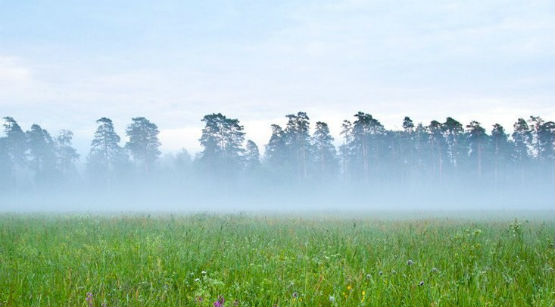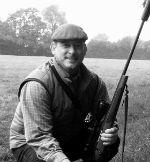James Schneider has to call on all his field craft skills to outwit an elusive Roebuck.

(Above: Low lying mist and fog can make for some unusual stalking)
I realise Roe are intelligent creatures, but a particularly elusive buck was pushing me to really think outside of the box. He had me zeroed with time piece precision, and I had bumped into him going back at least three years. Like a border collie, he figured out my various approaches, and demonstrated military-esque territorial brilliance with his command of the high ground.
There he would sit, surveying all angles from the wood up the various hedges as the south facing sun warmed him, looking like a Roebuck Simba and intent on denying me any satisfaction; often before I had even turned the corner from the fence gate!
The rising early temperatures of late May caused an inversion effect as warm air met cooler evaporation from the Test valley below. As a result, a fine and humid fog descended upon the ground providing an unusual condition for stalking. Temperature 12 degrees centigrade and mostly still, very little wind. The early summer vibrant green landscape boldly contrasted with the obscuring ground cloud making it feel as if one were walking in a sort of bubble, isolated from all around that was unseen.
I approached the ground from the west and crept to the edge of the field. Sure enough, a mature doe sat couched less than 100 yards down from me with her back to the wheatfield, providing perfect vantage to her left and right down the edge while concealed by the height of the growing crop.
(Above: A fine Roebuck and a great trophy)
At first I attempted to move forward to see if I could identify an accompanying buck, but after some very slow yards it was clear I would disturb her and she would run off stressed, which would likewise move the buck with no chance of a shot. This was a cat and mouse game we had played several times before.
It then occurred to me that given her position she, and most likely he, was couched up to see down the edge of the field, but not into the field. A slight breeze began from the north/northeast and I retreated into the mist, moved along the intersecting hedge to my right and then quietly crept into the field and onto a tramline that ran parallel to the edge of the field and resting doe.
The mist remained heavy as I slowly and deliberately advanced, two or three steps at a time to just before a point where I knew the doe was couched a mere 10 yards to my left. Being upwind and having stalked at a snail’s pace for 75 yards over 50 minutes, she had not yet caught onto how close I was until finally one step too far jolted her restful rumination.
I lowered my profile, and it was clear that given the mist and unusual method of my approach she was confused as to what I was. She paused for several seconds, then casually hopped over the fence, and disappeared into the wood. I quickly moved from the tramline back to the field edge and set up on my sticks, waiting to see if the buck would follow from parts unknown.
Sure enough, another 100 yards down the slope of the hill I saw his large head and six points rise from a few feet inside the green wheatfield. Settling mist rose like great puffs of smoke as he slowly emerged onto the field edge, a brown form still cloaked in a fine white veil. While he was expecting to see something, he could not make me out in the fog as I stood motionless with my face lowered and obscured by the bill of my cap. I remained waiting on my sticks watching through my scope for anxious moments until he finally stepped forward out of the mist and turned broadside presenting an ideal backstop for a clean 80 yard heart/lung shot.
The rifle report cracked with a muffled, moderated echo and thud as the buck went down. A startled Muntjac from a distant hedge began barking in earnest while running away, his warning call getting fainter and fainter. Wood pigeons rose in a clamber from the tops of nearby Ash and Beech while other birds cackled at the disruption.
And then, just like that, all settled down and was quiet again. In what seemed like seconds, the sun began to burn through the grey. I cautiously approached the fallen buck while the fog retreated as if pulled back like a blanket, revealing a very satisfying result.
On this occasion, thinking outside-the-box enabled me to grass a top buck, and the stalk will be remembered as one of the better ones. It goes to show how using different environmental conditions to one’s advantage and mixing up the proverbial playbook can really pay off.
 James is a regular contributor to 'County Deer Stalking - Online Magazine'. To read more from James follow this link: young-blood
James is a regular contributor to 'County Deer Stalking - Online Magazine'. To read more from James follow this link: young-blood
To Go stalking with County Deer Stalking call: 0203 981 0159 or email:




















